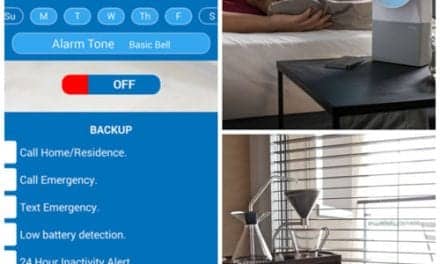Experts detail their strategies for RLS patients, including non-pharmacological and pharmacological treatments, as well as how to prevent and manage augmentation.
Restless legs syndrome (RLS) or Willis-Ekbom disease (WED) is one of the most common chronic sensorimotor neurologic conditions that any clinician will ever encounter. RLS occurs in 5% to 10% of the adult population in the United States and 2% to 3% are considered to be moderate to severe. Unfortunately, only a third of them have been diagnosed, according to the National Sleep Foundation.
A recent study by John W. Winkelman, MD, PhD, and his Harvard colleagues reported a strong association between RLS and cardiovascular risks, such as hypertension and heart disease.1 He found that the higher the frequency and severity of RLS symptoms, the stronger the association. Additionally, RLS patients often complained about poor quality of life comparable to other chronic disabling medical conditions such as diabetes and arthritis.
Due to the important long-term consequences of RLS and the availability of current treatment options of proven efficacy and safety, its early identification and guidance for long-term treatment is highly relevant.
Long-term treatment for RLS consists of non-pharmacological treatments and pharmacological treatments.
Non-pharmacological Treatments
Non-pharmacological treatments include:
- Removal of potential aggravators such as alcohol, caffeine, and nicotine, as well as sleep deprivation.
- Consider discontinuing medications that can worsen RLS such as selective serotonin reuptake inhibitors (eg, paroxetine, fluoxetine, sertraline), tricyclics (eg, amitriptyline, nortriptyline), dopamine antagonists (eg, clozapine, risperidone), and antihistamines.
- Lifestyle changes, such as improving sleep hygiene by incorporating a regular sleep-wake schedule, a warm bath at bedtime, and moderate regular exercise; practicing mental alertness techniques and thermal biofeedback; and considering leg massage and acupuncture.
- Mechanical device Relaxis has been approved by the Food and Drug Administration (FDA) and is designed to provide relief of RLS. But two clinical studies performed by Sensory NeuroStimulation found that Relaxis may cause leg cramping, soreness, pain, and motion sickness (in the studies, these resolved when affected participants stopped using the device).
Pharmacologic Treatments
Dopaminergic medications (DA) have been widely used over the last decade for the pharmacological treatment of RLS. Currently, three dopaminergic drugs—ropinirole, pramipexole, and rotigotine—and one non-dopaminergic drug—gabapentin enacarbil—are approved by the FDA for the treatment of RLS.
Augmentation Overview
However, long-term use of DA can worsen overall disease severity through a process called augmentation, but this has not been reported with gabapentin enacarbil. When RLS patients who had been stable on DA medications for 6 months then begin to experience a backSLIDE (see mnemonic below), one needs to consider augmentation as the cause. I summarize the diagnostic criteria of augmentation with the mnemonic, “SLIDE.”
- S: Spread to other extremities
- L: Latency of symptoms is shortened at rest
- I: Intensity of symptoms is greater than before treatment
- D: Duration of efficacy of DA is shortened
- E: Early onset of symptom by 2 to 4 hours
Because of the widespread use of DA, new cases of augmentation are increasing at an alarming rate of 8% per year. Our sleep center is facing the same dilemma as other sleep centers around the country of treating cases due to augmentation. Mark Buchfuhrer, MD, at Stanford Sleep Clinic told me that 75% to 90% of the center’s RLS referrals are due to augmentation.2
Augmentation was first described in 1996 when it was reported that 73% of RLS patients treated with levodopa experienced these difficulties.3 Other DAs such as long-term use of pramipexole for one year, two years, and 8 to 10 years were associated with augmentation rates of 3%-9%, 33%, and 42%-68%, respectively. Ropinirole appears to have similar augmentation rates. There is some, but not definitive, evidence that long-acting DA causes less augmentation than short-acting DA. However, direct comparisons between these studies are difficult since these studies involved varied definitions of augmentation.
Augmentation can also severely affect the quality of life and cause additional healthcare burdens for RLS patients, in addition to the insomnia and sensory symptoms caused by RLS.4
Preventing Augmentation
There are several strategies that we utilize in our sleep center to prevent augmentation.
- Keep dopaminergic load as low as possible. We try to keep dopaminergic load as low as possible or we simply use medication that has no risk of augmentation, such as gabapentin enacarbil, as the first-line treatment for de novo patients. The choice of medications should be individualized depending on the risk and benefits of each treatment option weighed against the risk of augmentation. Physicians must consider the patient’s previous response to treatment, possible drug-drug interaction, and patient comorbid conditions when initiating treatment.
- Consider a longer-acting DA. When using DA, consider using a longer-acting DA since studies have shown that longer-acting DA may cause less augmentation. As with all DA, always avoid increasing the dose above the recommended level for RLS.
- Consider intermittent dosing or dose reduction with DA. Since RLS symptoms vary and intensity fluctuates, physicians should consider intermittent dosing or dose reduction especially when RLS symptoms are mild or occur less than one or two times per week.
Managing Augmentation
But more often RLS patients referred to us have already developed augmentation, so here are different strategies we utilize to manage it.
- Always check the iron. If the patient ferritin level is <50-75 ug/L or transferrin saturation <20, consider an iron supplement. Since ferritin is an acute phase reactant, it is prudent to also check the transferrin saturation level.
- Consider dose splitting or dose advancement. Since the RLS symptoms come on earlier in the afternoon in augmentation, one should consider keeping the total daily dose the same, but either dividing or advancing the time of the dose before the symptom onset.
- 10-day washout. Patient is gradually weaned off from DA, followed by a washout period of 10 days, then a new drug may be introduced to substitute for DA.
- Consider substitution. A patient can be switched to: an alpha 2 delta ligand such as gabapentin enacarbil; a long-acting DA; or a high-potency opioid such as methadone.
The long-term management of RLS is challenging, yet rewarding. The strategies outlined above have been developed through a combination of our clinical experience with managing RLS patients and clinical guidelines developed by the International Restless Legs Syndrome Study Group. Further research is needed to determine the best approach in managing this group of patients.
Sneak Peek sponsored by:
Xenoport did not review or otherwise influence this article prior to publication
Daniel Lee, MD, FAAN, FAASM, is the author of numerous pivotal trials on restless legs syndrome, including the ropinirole and gabapentin enacarbil trials that led to their FDA approval. He has been lecturing nationally and internationally including Beijing, China, and Paris, France, on various sleep disorders. Angela McClees, PA-C, is a nationally certified physician assistant specializing in sleep medicine. She has extensive experience with clinical trials in sleep medicine. Tiffany Lee, MD, is a resident physician at the Cleveland Clinic Foundation.
References
1. Winkelman JW, Shahar E, Sharief I, Gottlieb DJ. Association of restless legs syndrome and cardiovascular disease in the Sleep Heart Health Study. Neurology. 2008;70:35-42.
2. Buchfuhrer M. Incidence of Augmentation at Stanford Sleep Clinic. Personal communication.
3. Allen RP, Earley CJ. Augmentation of the restless legs syndrome with carbidopa/levodopa. Sleep. 1996;19:205–13.
4. Hening W, Walters AS, Allen RP, Montplaisir J, Myers A, Ferini-Strambi L. Impact, diagnosis and treatment of restless legs syndrome (RLS) in a primary care population: the REST (RLS epidemiology, symptoms, and treatment) primary care study. Sleep Med. 2004;5(3):237-246.










I enjoy what you guys are usually up too. This sort off
clever work and coverage! Keep up the good wkrks guys I’ve incuded you guys to my blogroll.
Have tried several different meds but still I have nights like last night; My legs were cramping and my lower back. I tried taking two tablets of the mirapex low dose which usually seems to help; but for the last 24-48 hrs I have had very itchy skin and I break out in hives. I was tried on Horizant but I began having suicidal thoughts so they took me off.
The worst part is: after taking a hot shower and readying for bed the same RLS comes bakc in full swing. My new sleep specialist prescribed a patch that is used for Parkinson’s patients. Are there any ” new treatments on the market?’ Or meds I have not tried. I am growing weary from lack of sleep.
My husband had suffered from severe RLS and the resultant augmentation for years because local docs didn’t know how to treat RLS. In 2008 we were desperate for relief, so we searched online for answers and found Dr. Buchfuhrer’s site. We called his office, left a message and within a couple hours he returned our call. He invited us to make an appointment. My husband flew from Iowa to California (he has family in LA), saw the doc, was prescribed Horizant and methadone and found IMMEDIATE relief!!! He was ecstatic to say the least. Do yourself a favor and contact Dr. Buchfuhrer. Unfortunately, we found it VERY difficult to find any local doctors willing to write the methadone prescriptions… mostly because they fear repercussions from the state medical board and they don’t truly understand that it works! We even visited the University of Iowa Hospitals to see if they’d take my husband’s case and write the prescriptions, but they weren’t interested, even suggesting the treatment was irresponsible and unwarranted… actually, I can’t remember the exact wording the doc used, but he was definitely not interested. And to make matters worse, UIHC is a teaching school! Ugh. Anyway, my husband has been taking the methadone and gabapentin (he stopped taking Horizant a few years ago after our insurance wouldn’t pay for it) and has VERY infrequent “break-through” RLS symptoms. Good luck!